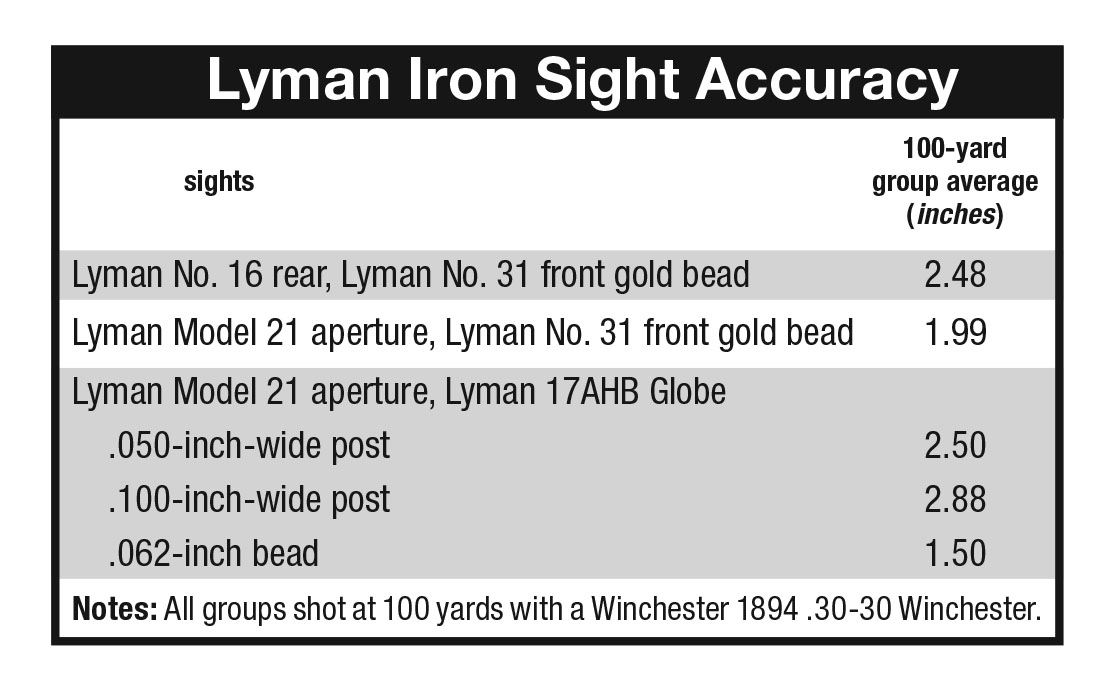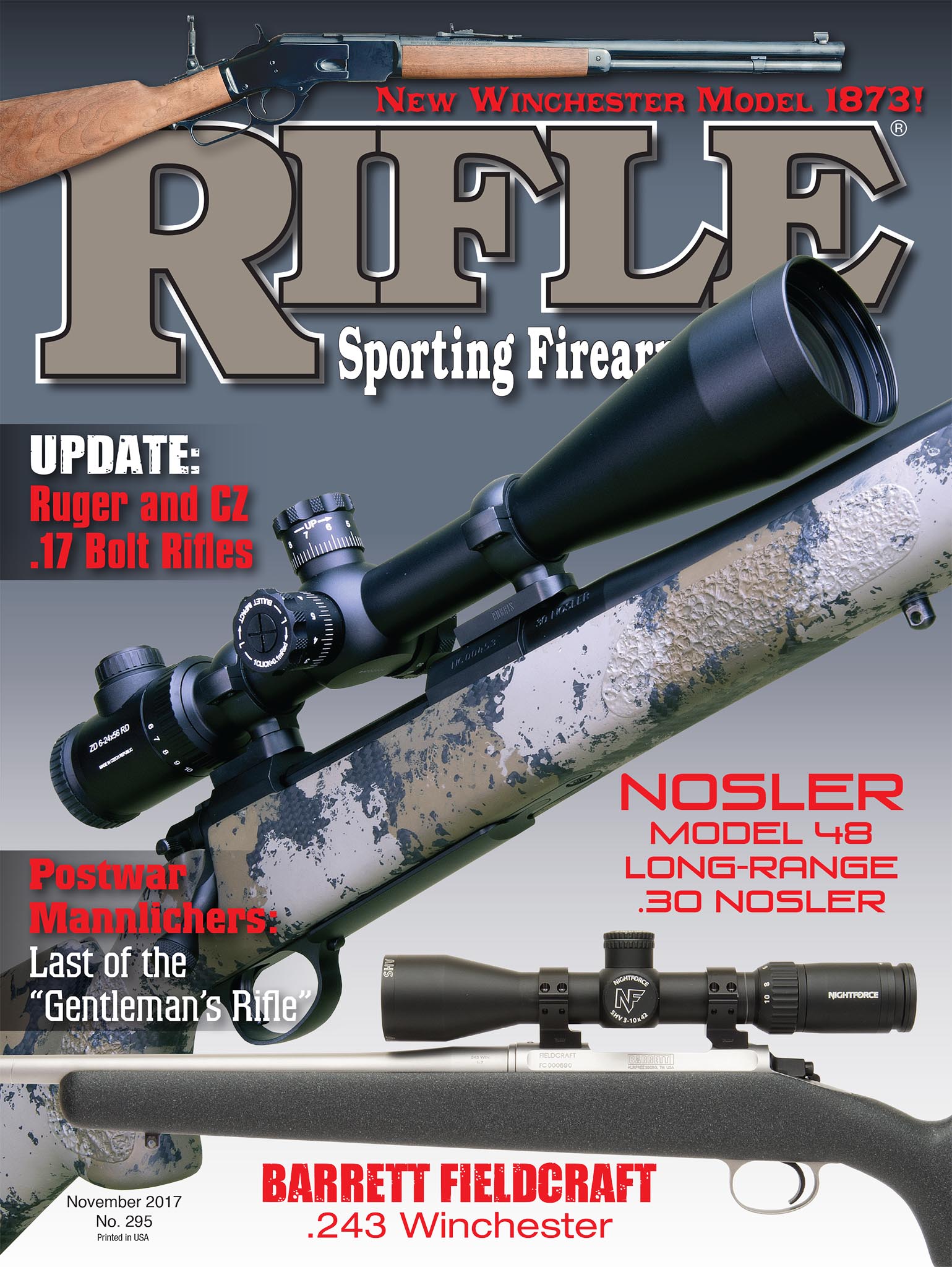A Rifleman's Optics
Iron Sight Support
column By: John Haviland | November, 17
Aiming with iron sights connects the shooter to a rifle in the moments prior to taking a shot. All sorts of iron sight options are available, from front sights consisting of a plain blade, post, bead or circle, to rear sights as basic as a notched leaf or a refined aperture.
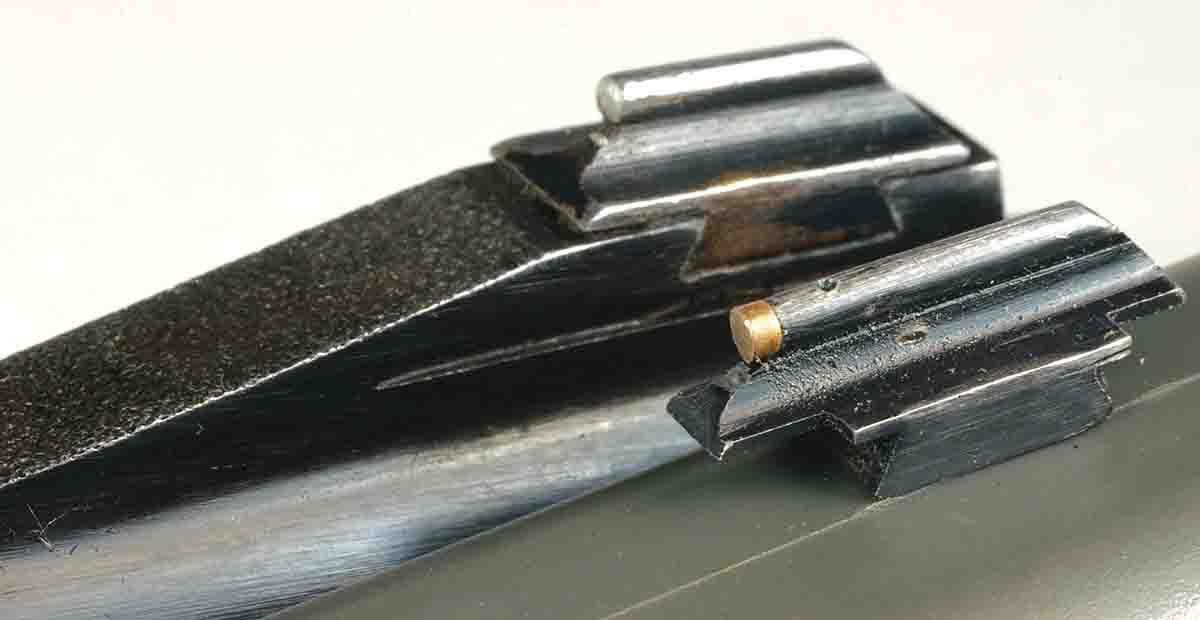
A Winchester Model 1894 .30-30 Winchester made in 1936 is one such rifle of mine. The carbine cycles as smoothly as soaped silk and is a delight to shoot. The curve of its steel strap buttplate fits in the shoulder to position the comb tightly under my cheek and align my eye with the sights.
The Winchester’s original owner must have found the factory sights lacking. The front sight had been replaced with a Lyman No. 31 with a .075-inch diameter, flat-faced gold bead. Beads that size are fairly standard on many front sights. The original beads on a Winchester Model 94 made in the 1950s – and new Marlin 336s – are that diameter. The diameter of the bead on a Savage 99 manufactured in 1953 is .080 inch. Those beads just cover a 4-inch circle at 100 yards.
To match the front sight, the original owner exchanged the Winchester’s rear sight with a Lyman No. 16 rear sight on the barrel. The Lyman sight has an adjustable elevation blade, and a white diamond on its face leads the eye to the bottom of its notch. The rear sight folds down, so the previous owner must have also installed a Lyman Model 21 aperture rear sight at the same time. Loosening its locking lever and moving the aperture sight upward provides plenty of space to aim with the open sight on the barrel. The owner must have been a worrywart, having a standby to the No. 16 sight.
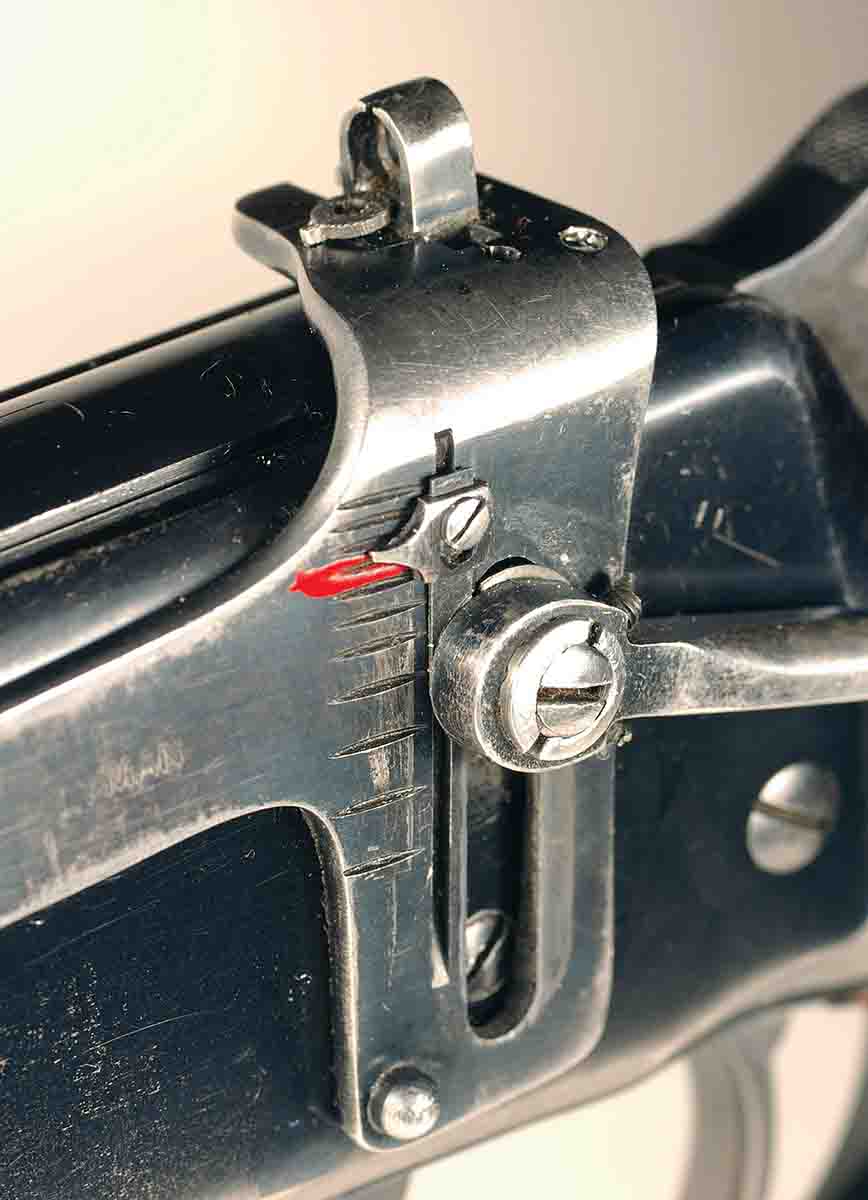
To see how precisely these sights shot, I made targets consisting of a 4-inch white circle bordered by a 1-inch black ring. Any smaller target is difficult to see and precisely align a front sight on at 100 yards. While the paint on the targets was drying, I loaded several boxes of .30-30 cartridges with Sierra 150-grain roundnose bullets and 32.0 grains of Ramshot TAC powder.
The distance was only 15.5 inches between the Lyman No. 16 rear sight and front sight, and my eyes did a fair job of shifting focus back and forth to align them. My focus moved from the front sight to the target. With both aligned, my focus shifted back to the front bead. Retaining the sight picture, I pulled the trigger. With a short sight radius that somewhat hid alignment error, I did not expect all that tight of a three-shot group, though a glance through a spotting scope showed a cluster of three holes in the paper that later measured .72 inch wide. A second group of 4.23 inches, with vertical stringing to it, was more in line with reality.
The Lyman Model 21 aperture sight has a .077-inch diameter aperture that can be pivoted down to reveal a .166-inch aperture. The Model 94 shoots slightly tighter groups aiming with the smaller aperture; however, light transmission is not nearly as good through the small hole, and it takes a few seconds to see and align the front bead on a target.
Aiming with the large aperture and Lyman gold bead, the Model 94 shot 1.95- and 2.03-inch, three-shot groups at 100 yards. As evening waned, three cartridges remained. The Winchester shot those in a 1.50-inch group.
I hunted antelope one fall with the Winchester using the Lyman aperture and front sight. Several stalks concluded with antelope out of range and my knees full of cactus spines. Finally, I crawled to within 80 yards of a doe. The bead settled against the antelope’s ribs. The antelope jumped ahead at the shot. Working the lever and looking over the sights, I watched the antelope slow and then fall over in the short grass.
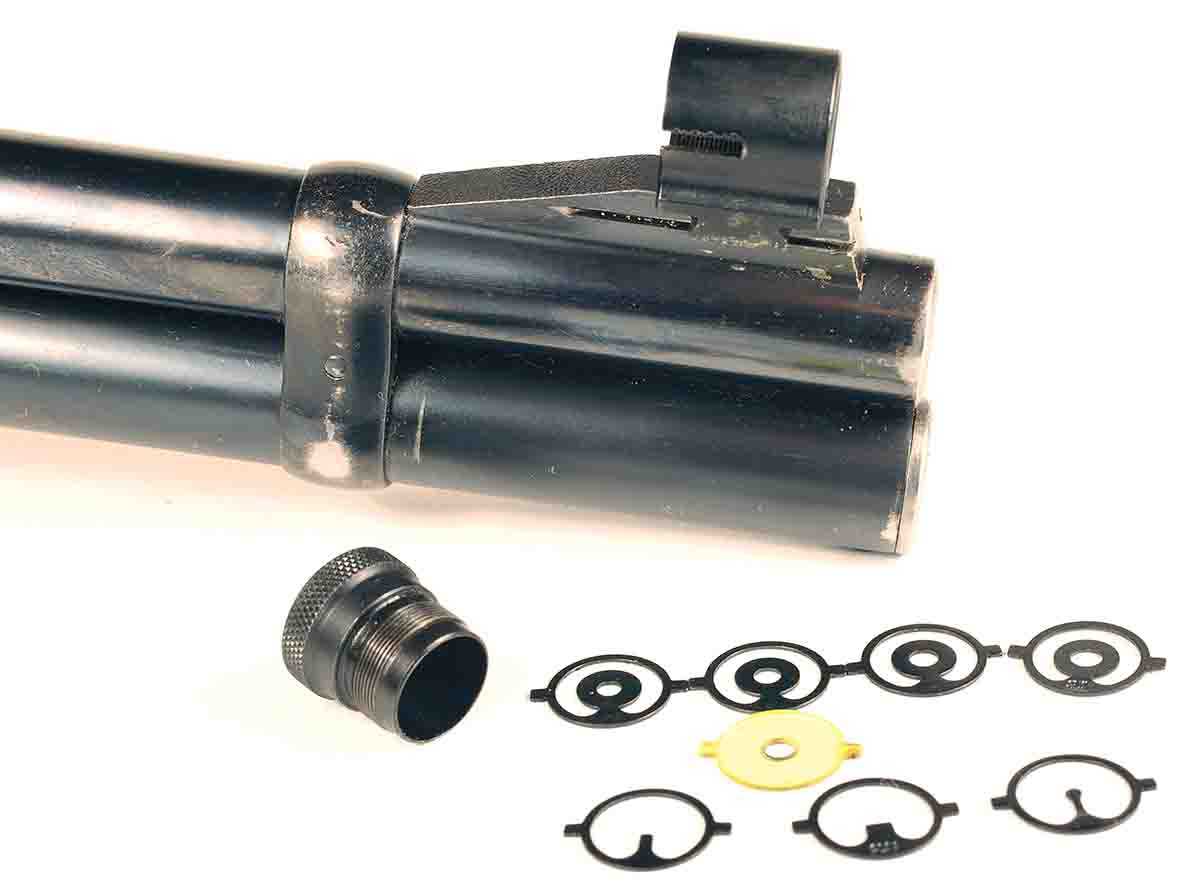
After returning from target shooting, a Lyman 17AHB Globe front sight was installed on the Winchester. The sight fit into the dovetail on the front sight ramp. I have wanted another globe sight ever since having one on my Daisy Model 99 BB gun when I was a boy.
A threaded keeper screws in and out to allow changing aiming inserts that include .050-inch and 100-inch-wide flat-top posts, a .062-inch bead, .093-, .102-, .110- and .120-inch apertures and a yellow plastic insert with a .120-inch hole.
The Lyman Globe is intended mainly for target shooting. The aperture inserts are designed to enclose a black circle target. A halo of white around the target helps center the target in the aperture. With a sight radius of 22.75 inches, a circle 2 feet wide was visible at 100 yards through the largest aperture. The smallest aperture delivered a view nearly 15 inches wide, which was still too large to precisely aim at a deer, let alone a marmot. Narrower apertures would be impractical though, because the small amount of light coming through them would provide a dim view, and the face of the aperture would block the surrounding area and slow alignment.
The flat-top posts were quick to aim. Peering through the rear aperture, the posts quickly caught my eye. The top of the posts were easily aligned on the bottom of the white circle for a 6 o’clock hold, and I fired. Groups averaged 2.88 inches with the wider post but were a bit tighter with the narrower and taller post. There was some vertical stringing to the groups.
My Daisy BB rifle has sat forgotten for years. I recently dusted it off and a bead on a narrow post, just like the Lyman bead, was in its globe sight. Maybe I knew something when I was 7 years old, or perhaps my dad had suggested it.
The bead fit inside the 4-inch circle at 100 yards, with a slight halo of white showing around the centered bead. The rifle shot groups of 1.23 and 1.77 inches with that hold. With a 6 o’clock hold, the rifle shot 1.25- and 2.90-inch groups. Some say the view is restricted and dim when looking through the tunnel of a globe sight. I never saw that. If it is, then shoot with both eyes open.
One time, my brothers and I went out with our Daisy rifles. We shot some birds in the brush along a creek, just like our dad shot grouse. I clearly remember the bead black and bright against the feathers. We brought the skinned birds home and put them in the kitchen sink, just like our dad did after a day afield.
Our mother looked in the sink and shrieked. Our dad had unforgettable disciplinary words for us that evening.
